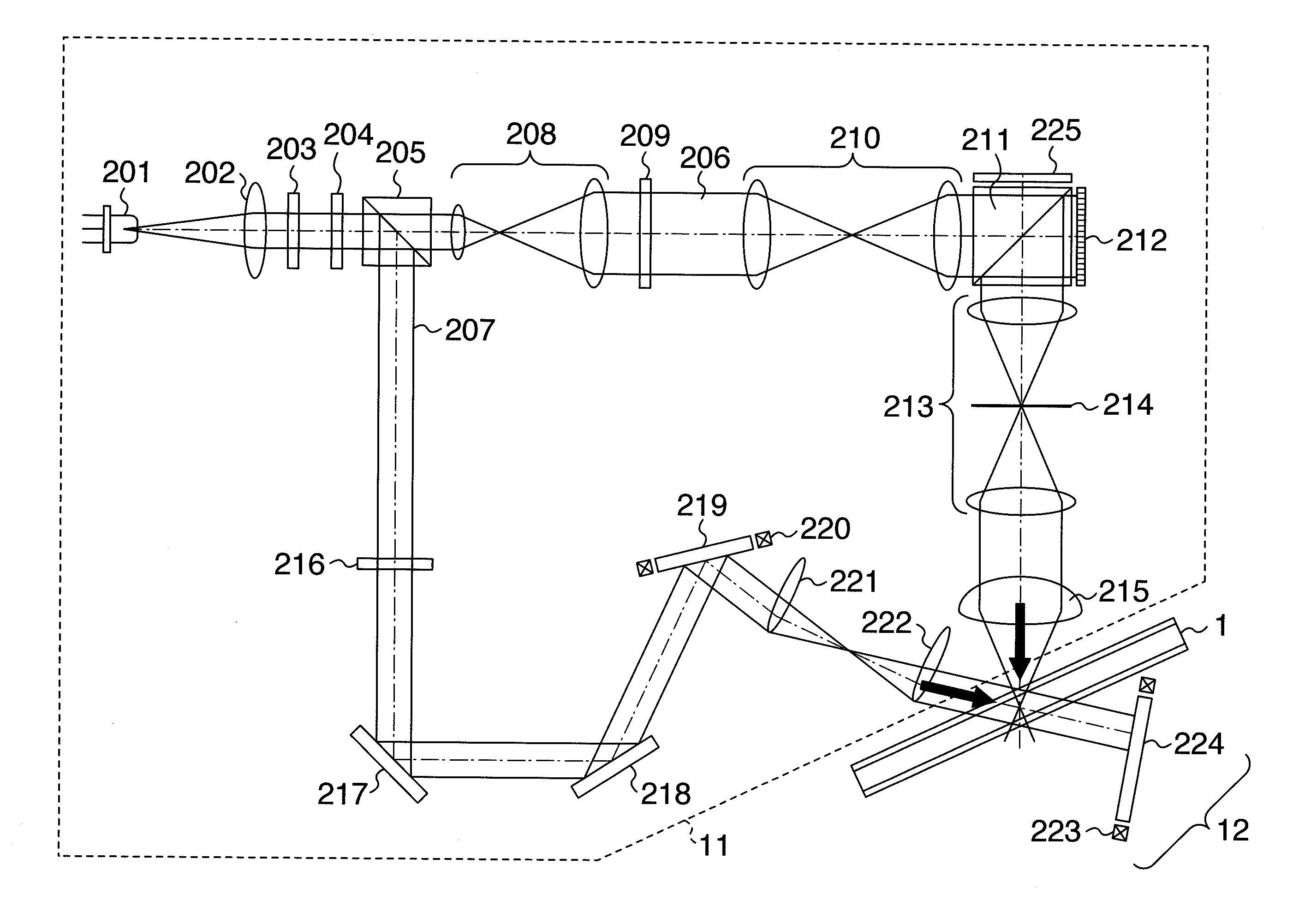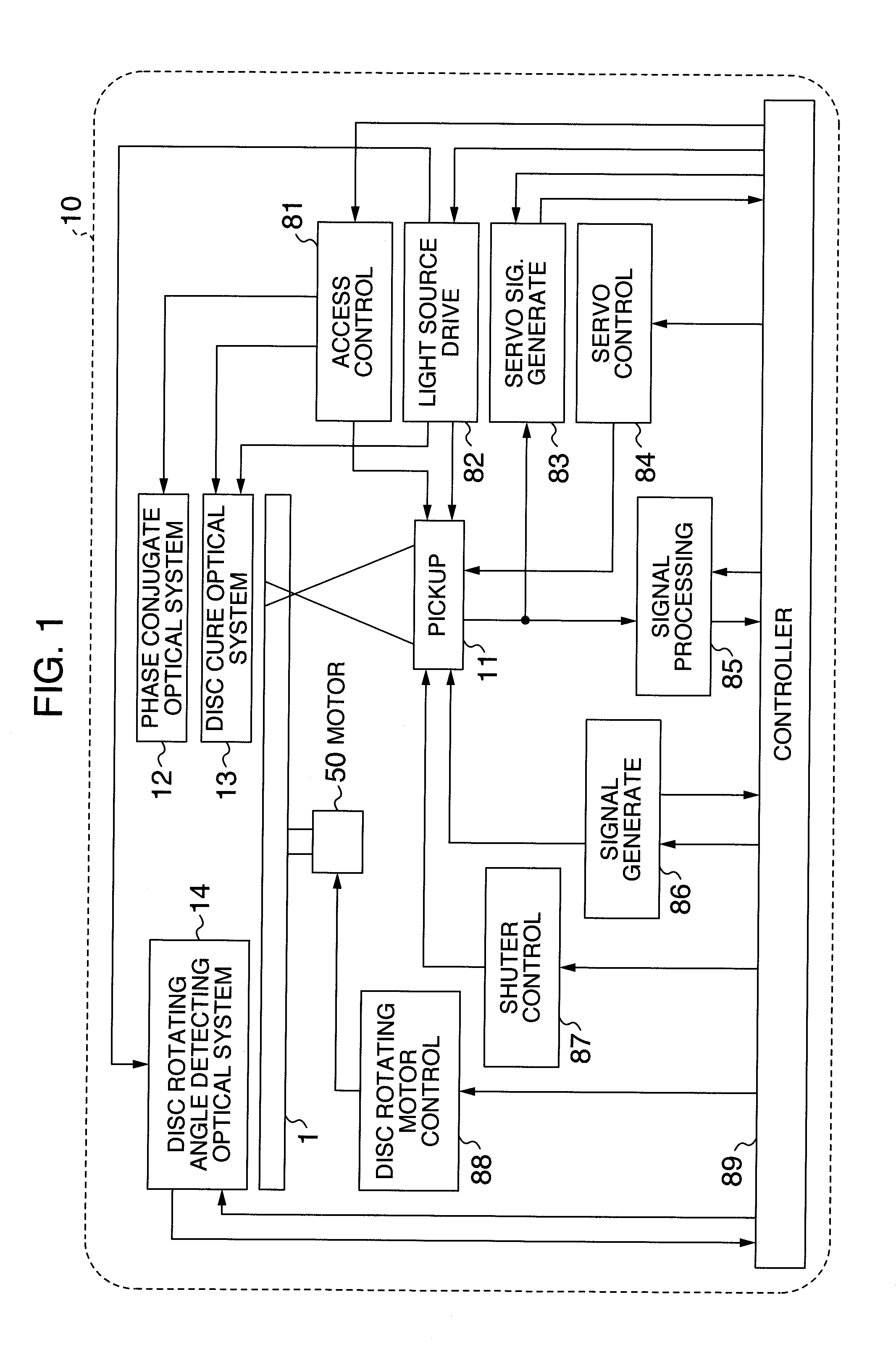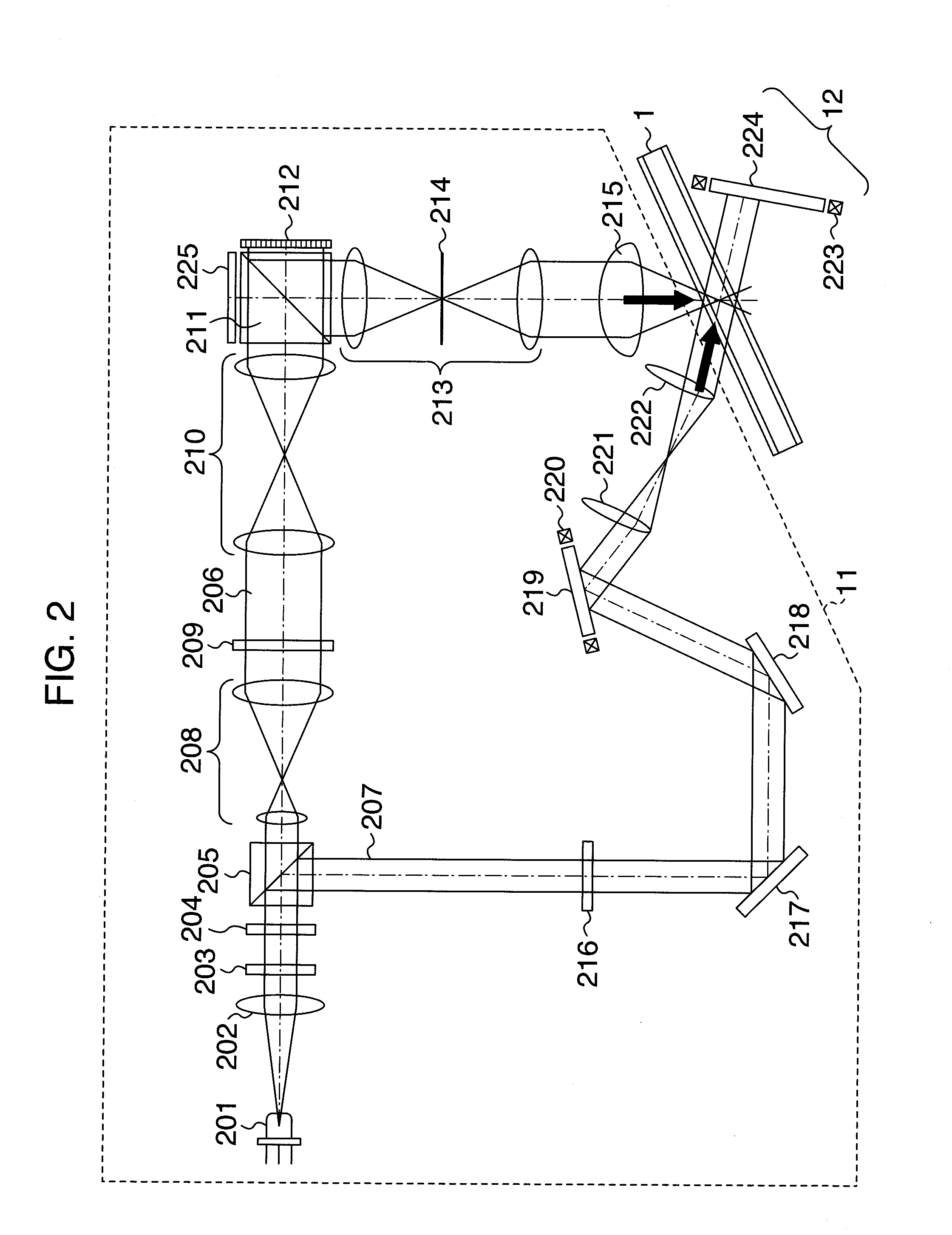Optical information reprocessing apparatus and optical information reproducing method
- Summary
- Abstract
- Description
- Claims
- Application Information
AI Technical Summary
Benefits of technology
Problems solved by technology
Method used
Image
Examples
embodiment 1
[0067]Description of the outline will be made on the validity of dividing a page into a plurality of areas and performing adaptive equalizing to every divided area. FIG. 5 schematically shows the difference in reproduction quality depending upon the positional difference within the same page. In illustrations (a) of FIG. 5, when black-colored OFF pixels surround a white-colored ON pixel as shown in an upper-side illustration (a) of the Figure, a spatial light modulator in recording indicates the ON pixel and the OFF pixels adjacent thereto in the form of binary signal as shown in a lower-side illustration (a) of FIG. 5. However, when recording the signal on an optical information recording medium in the form of a hologram and looking at a reproduction signal from the recorded signal, it is found that an intersymbol interference occurs due to leakage of the signal into the adjacent OFF pixels from the ON pixel, as shown in an upper-side illustration (b) of FIG. 5. This is because the...
embodiment 2
[0075]The description common to that of Embodiment 1 will be omitted hereafter. FIGS. 10A and 10B show an example of a method for dividing a page according to the second embodiment. Like the Embodiment 1 a page is divided into a plurality of areas each having a certain size. The areas which are close in quality with each other are coupled as shown in FIG. 10A to thereby expand the area. The signal quality of the expanded area can be considered as SNR expressed by the following Expression (2) or Expression (3) or the mean luminance, for example.
SNR=(μON+μOFF) / (σON+σOFF) (2)
SNR=(μON+μOFF) / (σON2+σOFF2)0.5 (3)
where μON and μOFF represent mean luminances of ON pixel and OFF pixel, respectively, and DON and DOFF represent the standard deviations of ON pixel and OFF pixel, respectively. In this embodiment, if areas are similar in signal quality to each other there is a possibility that the areas are coupled even when are not adjacent to each other. For this reason, there is a possibility...
embodiment 3
[0079]FIG. 13 shows one example of operation flow according to the third embodiment directed to a method for adaptively equalizing every divided area. In Embodiment 3, after one filter coefficient is calculated from the overall pages the filter coefficient is modified so that it may be the coefficient for every divided area and the modified coefficient is equalized for every divided area. At step 501, one modified filter coefficient is calculated from the overall pages using an adaptive algorithm such as LMMSE or the like. Then, at step 502, the page is divided into a plurality of areas each having a certain size. At step 503, the processing proceeds to a known pattern within the divided area. This known pattern may be the known pattern for calculating the quantity of difference described in Embodiment 1, or may be a known pattern for determining a filter coefficient newly embedded into the page. At step 504, using the filter coefficient calculated at step 501 as an initial value th...
PUM
 Login to View More
Login to View More Abstract
Description
Claims
Application Information
 Login to View More
Login to View More - R&D
- Intellectual Property
- Life Sciences
- Materials
- Tech Scout
- Unparalleled Data Quality
- Higher Quality Content
- 60% Fewer Hallucinations
Browse by: Latest US Patents, China's latest patents, Technical Efficacy Thesaurus, Application Domain, Technology Topic, Popular Technical Reports.
© 2025 PatSnap. All rights reserved.Legal|Privacy policy|Modern Slavery Act Transparency Statement|Sitemap|About US| Contact US: help@patsnap.com



